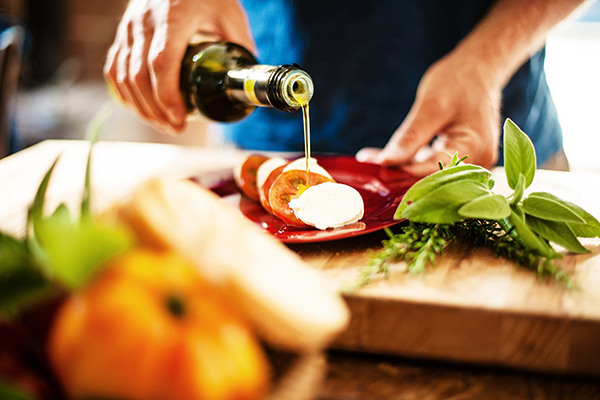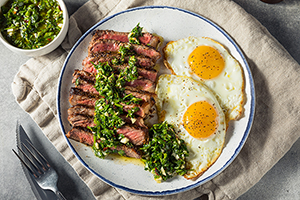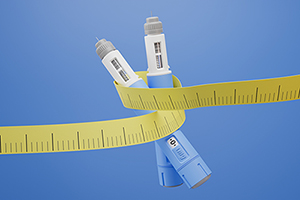



| By T.J. Robinson

To my readers:
I’ve often written about the importance of high-quality extra virgin olive oil as part of a heart-healthy diet. Today, I wanted to share with you a piece by someone who’s even more passionate about olive oil than I am! T.J. Robinson, self-professed Olive Oil Hunter® and founder of the Fresh-Pressed Olive Oil Club (of which I’m a longtime subscriber) has provided us with nine big mistakes many people make when it comes to buying, storing, and consuming olive oil. I hope you give it a read, and ensure you’re not making any of these “rookie” mistakes!
–Dr. Hoffman
(This article contains sponsored content)
Extra virgin olive oil is one of the world’s most popular superfoods. But if you make any of these common mistakes when buying or storing your oil, you can easily miss out on the magnificent flavor and most or even all of its health benefits.
Mistake #1: Buying any grade other than “extra virgin.” To reap the health advantages of olive oil, it is crucial that you procure extra virgin olive oil (EVOO), the only form of olive oil that retains its natural phenols (antioxidants) and other active compounds. EVOO is minimally processed, whereas other oil grades, such as “virgin,” “pure,” or “light,” typically have been industrially refined and the healthful phenols destroyed.
Mistake #2: Not checking for—and insisting on—freshness. Olive oil, unlike wine, does not get better with age. Just the opposite. The olive is, after all, a fruit. Similar to other fruit juices, olive oil is best enjoyed fresh-squeezed. That’s when it delivers its zenith of freshness, flavor, and nutritional potency.
Always look for a “pressing date” on the label. Sometimes it’s called the “harvest date.” This tells you how fresh the olive oil is. If it’s beyond six months, don’t buy it! The precious nutrients in olive oil start to deteriorate six months after pressing.
Unfortunately, it’s not easy to find olive oils with pressing dates on their labels. Producers of ordinary mass market olive oils know that their oils may sit on supermarket shelves much longer than six months. As a result, they intentionally neglect to include the pressing date on their labels. They don’t want you to see how old and possibly stale their olive oil may be. At the link below, you’ll find harvest-fresh EVOOs that all show the pressing date.
Mistake #3: Being fooled by the “best used by” date. The same producers who neglect to put a “pressing date” will often display a “best used by” date on the label. But don’t be fooled—that’s merely a guide to avoiding rancidity and has nothing to do with peak flavor and nutritional potency. Outrageously in my view, many of these “best used by” dates are set to maximize shelf life and can run as long as two years, way beyond my recommended six-month freshness limit.
Mistake #4: Not shopping online. Because stores are notorious for stocking their shelves with oils that omit pressing dates and letting these oils remain on the shelves far too long, I encourage olive oil lovers to shop online. There are many outstanding artisanal olive oils available online that are sent to you direct from small farms right at harvest time. From these award-winning suppliers, you can receive ultra-fresh olive oil at their peak of flavor and nutritional goodness. See the link at the end of this article for more information.
Mistake #5: Buying olive oil in a clear bottle. Just as time is a mortal enemy of olive oil’s precious nutrients and flavor, light quickly degrades olive oil as well. Never buy any olive oil packaged in a clear glass bottle. Buy only oils in dark green or brown bottles. Avoid purchasing any oils displayed in direct sunlight or under fluorescent lights, so common in supermarkets.
Mistake #6: Having no idea what you’re buying. If possible, shop where sampling is encouraged. Some stores now have olive oil bars. For an online source that lets you sample before you commit to buying anything, see the link below.
Since freshness is so vital, whenever you sample an olive oil, anticipate feeling a gentle pinch at the back of your throat—a hallmark of the freshest olive oil. EVOO contains more than 30 phenols, which have anti-inflammatory, anti-bacterial, and antioxidant properties. The best-known of these phenolic compounds is oleocanthal, which acts in a manner similar to the pain reliever ibuprofen. It’s Mother Nature’s own all-natural pain reliever. The name oleocanthal has very direct roots: oleo is the Greek term for “olive”; canth means “sting.” The “sting” refers to a prickly sensation in the back of the throat, a signifier of high phenolic levels in EVOO, which only the freshest olive oils deliver.
Mistake #7: Unwittingly buying olive oil made by the Mafia. In recent years, many of America’s most respected media, including Forbes, The Wall Street Journal, and CBS News, among others, have reported the appalling news that many olive oils in US stores are cheap counterfeits made by the Mafia. According to 60 Minutes, shoppers face a “sea of fakes.” Investigators have found that some of these fakes contain ingredients and chemicals that could cause serious harm. To avoid such fakes, buy only those olive oils that are independently lab-certified to be 100% pure extra virgin olive oil. All olive oils described at the link below qualify on this count.
Mistake #8: Storing your oil incorrectly. Because olive oil is perishable, heat and oxygen are two additional enemies of flavor and EVOO’s healthful polyphenols. Store your olive oil in a cool, dark place—never next to the stovetop. For long periods between uses, feel free to store it in the fridge. Unless you are a voracious user, buy olive oil in small bottles or tins to minimize the amount of oxygen in contact with your oil inside its container.
Mistake #9: Thinking that all olive oils taste alike. If you’ve always bought your olive oil in a supermarket, odds are you’ve never experienced the extraordinary diversity of flavors that await you among the finest artisanal oils.
There are more than 700 kinds of olives, each with its own flavor profile. But ordinary mass-market olive oils sell in such huge volume, they must combine olives of many types, from numerous farms in different growing regions. In my view, this muddies the flavors that different olive varieties are known for.
In contrast, award-winning artisans create their oils from olives grown on small, boutique farms. These proud masters are dedicated to striving for flavor perfection from each different type of olive and deliciously food-friendly blends. This makes their award-winning creations as rich, complex, and distinctive as the finest wines.
For example, some varietals naturally yield a bright, spicy flavor. Their oils are audaciously bold and pair magnificently with a hearty charred steak or grilled lamb. In contrast, other artisanal olive oils are blended from olives that yield softer, more delicate nuances. These will perfectly complement—without overpowering—your delicate baked halibut. Still other olives naturally yield a greener, more herbaceous oil that will crown your salad greens and veggies with scrumptious farm-fresh flavor.
Discovering and enjoying these amazing differences in fine artisanal olive oils is not only fun, but as any master chef will tell you, it’s one of the great secrets of elevating your favorite dishes to new heights of flavor, elegance, and satisfaction.
For more information on small-farm artisanal olive oils that meet this and all the other criteria described here, please click below:
Though we think of declining estrogen as the hallmark of menopause, it's actually common for…

Up to 12 percent of Americans have ulcers at some point in life. Peptic ulcers…
Gallbladder disease is a modern illness. An estimated 20 million Americans have gallbladder disease. The…

Dr. Antonio Bianco, recipient of the American Thyroid Association’s John B. Stanbury Thyroid Pathophysiology Medal,…

There’s a misconception among low-carb dieters. Many people believe a low-carb diet is much higher…

New, more powerful weight loss drugs: Drugs like Wegovy, Rybelsus, Ozempic and Mounjaro/Zepbound are revolutionizing…

Leyla Weighs In: Eating for Energy and Emotional Well-Being

Our virtual voicemail is open 24/7, so there's no need to wait to submit your questions for Dr. Hoffman. Leave a message, and you may hear your question featured on the Intelligent Medicine radio program!